Best JPA and Hibernate Guides to Buy in December 2025
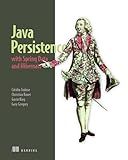
Java Persistence with Spring Data and Hibernate


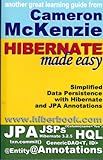
Hibernate Made Easy: Simplified Data Persistence With Hibernate and Jpa Java Persistence Api Annotations
- AFFORDABLE PRICES FOR QUALITY READS-GREAT SAVINGS ON TEXTBOOKS!
- ECO-FRIENDLY CHOICE: REDUCE WASTE BY BUYING PRE-OWNED BOOKS.
- WIDE SELECTION OF GENRES-DISCOVER HIDDEN GEMS AT GREAT DEALS!


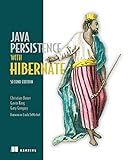
Java Persistence with Hibernate


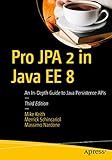
Pro JPA 2 in Java EE 8: An In-Depth Guide to Java Persistence APIs



Hibernate: An Annotations-based Approach


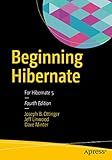
Beginning Hibernate: For Hibernate 5



Arquitectura Java JPA Domain Driven Design (Spanish Edition)


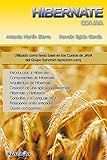
Curso de Hibernate con Java (Spanish Edition)


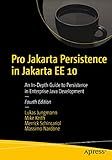
Pro Jakarta Persistence in Jakarta EE 10: An In-Depth Guide to Persistence in Enterprise Java Development



Arquitectura Java Sólida (Spanish Edition)


To return all values in JPA and Hibernate, you can use the findAll() method provided by the JpaRepository interface in Spring Data JPA. This method retrieves all entities of a given type from the database.
In Hibernate, you can use criteria queries or HQL (Hibernate Query Language) to fetch all records from a database table. Criteria queries allow you to specify certain conditions and restrictions on the returned entities, while HQL provides a more SQL-like syntax for querying entities.
Alternatively, you can also use native SQL queries in Hibernate to fetch all values from a database table. Native SQL queries give you more control over the SQL query being executed and can be useful when you need to perform complex queries that are not easily achievable using JPQL or Criteria API.
It's important to note that fetching all values from a table can be resource-intensive, especially if the table contains a large number of records. You should consider using pagination or limiting the number of records returned to improve performance and avoid memory issues.
How to select all values in JPA and Hibernate using a native query?
To select all values in JPA and Hibernate using a native query, you can follow these steps:
- Create a native query using the EntityManager or Session object. Here is an example using EntityManager:
EntityManager entityManager = entityManagerFactory.createEntityManager(); Query query = entityManager.createNativeQuery("SELECT * FROM your_table_name");
List<Object[]> results = query.getResultList();
for (Object[] result : results) { // Process each row of results }
- Execute the query using the getResultList() method to retrieve a List of Object arrays, where each array represents a row of results.
- Iterate over the List of Object arrays to process each row of results. You can access values in each row using index notation, for example: result[0], result[1], etc.
- Remember to handle any exceptions that may occur during the query execution or result processing.
By following these steps, you can select all values in JPA and Hibernate using a native query.
How to fetch all data in JPA and Hibernate with pagination support?
To fetch all data in JPA and Hibernate with pagination support, you can use the Query interface provided by JPA and Hibernate. Here is an example of how you can fetch all data with pagination support:
import javax.persistence.EntityManager; import javax.persistence.Query; import java.util.List;
public class UserRepository {
private EntityManager entityManager;
public List<User> findAllUsersWithPagination(int pageNumber, int pageSize) {
Query query = entityManager.createQuery("SELECT u FROM User u");
query.setFirstResult((pageNumber - 1) \* pageSize);
query.setMaxResults(pageSize);
return query.getResultList();
}
}
In the above code snippet, we create a Query object using the createQuery method of the EntityManager interface. We then set the first result and maximum results to fetch based on the provided pageNumber and pageSize parameters. Finally, we call the getResultList method to execute the query and return the list of users with pagination support.
You can use this method in your service or repository class to fetch all data with pagination support. Remember to inject the EntityManager instance into your repository class before using it.
What is the advantage of using Criteria API to retrieve all entities in JPA and Hibernate?
- Dynamic queries: Criteria API allows you to build dynamic queries at runtime, making it easier to construct queries with varying criteria.
- Type safety: Criteria API provides compile-time type checking, ensuring that the programmatic query construction is accurate.
- Ease of use: Criteria API provides an object-oriented way of building queries, making it more intuitive and easier to understand.
- Reusability: Criteria API queries are reusable and can be shared across different parts of the application.
- Integration: Criteria API seamlessly integrates with the JPA and Hibernate frameworks, providing a consistent and efficient way of querying data.
What is the simplest method to get all records in JPA and Hibernate?
The simplest method to get all records in JPA and Hibernate is to use the find() method provided by the EntityManager interface. You can create a query using the CriteriaQuery interface to fetch all records from a specific entity. Here is an example:
EntityManager entityManager = entityManagerFactory.createEntityManager(); CriteriaBuilder criteriaBuilder = entityManager.getCriteriaBuilder();
CriteriaQuery criteriaQuery = criteriaBuilder.createQuery(YourEntity.class); Root root = criteriaQuery.from(YourEntity.class); criteriaQuery.select(root);
List resultList = entityManager.createQuery(criteriaQuery).getResultList();
entityManager.close();
// Use the resultList to access all records
This code snippet creates a CriteriaQuery for the specified entity and fetches all records from the database using the getResultList() method.
How to fetch all entries in JPA and Hibernate without any conditions?
You can fetch all entries in JPA and Hibernate without any conditions by using a JPQL (Java Persistence Query Language) query with no conditions specified. Here is an example of how you can do this:
@Entity public class SomeEntity {
@Id
@GeneratedValue(strategy = GenerationType.IDENTITY)
private Long id;
// other entity fields and annotations
}
// In your repository or service class
public List getAllEntries() { EntityManager entityManager = entityManagerFactory.createEntityManager(); String jpqlQuery = "SELECT e FROM SomeEntity e"; TypedQuery query = entityManager.createQuery(jpqlQuery, SomeEntity.class); List resultList = query.getResultList(); entityManager.close();
return resultList;
}
In this example, SomeEntity is an entity class representing the table from which you want to fetch all entries. The getAllEntries method creates a JPQL query that selects all entries from the SomeEntity table. The query is then executed and the result list is returned.
Alternatively, you can also use a CriteriaQuery to fetch all entries without any conditions:
CriteriaBuilder criteriaBuilder = entityManager.getCriteriaBuilder(); CriteriaQuery criteriaQuery = criteriaBuilder.createQuery(SomeEntity.class); Root root = criteriaQuery.from(SomeEntity.class); criteriaQuery.select(root);
TypedQuery query = entityManager.createQuery(criteriaQuery); List resultList = query.getResultList();
return resultList;
Both of these methods will fetch all entries from the specified entity without any conditions.
